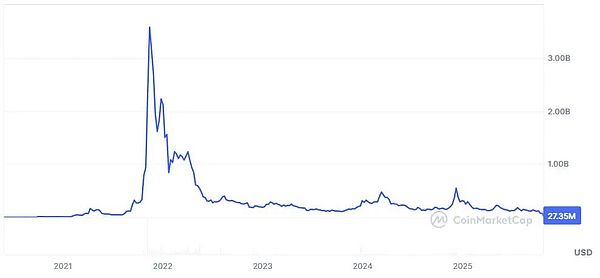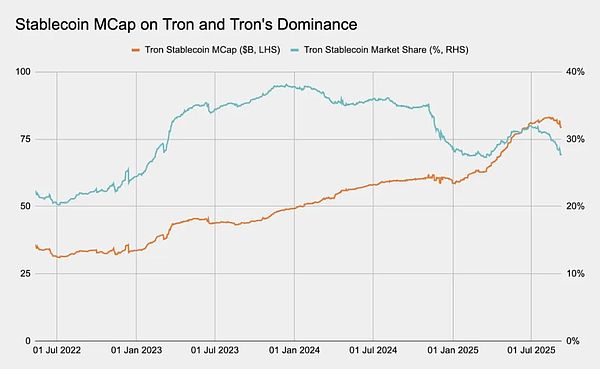
The Kadena Organization, the operating company behind the Kadena blockchain, announced its outage on October 21. The announcement was formal, calm, but painfully concise.
The company expressed its gratitude to the community, cited “market conditions” as the reason for the outage, and confirmed that it would cease all business activities and blockchain maintenance work immediately.
In the last notice on the X platform (formerly Twitter), the team reminded users:The technical side of the blockchain will still survive as miners will still maintain network security and the code will remain open source.
However, beneath this technical “survival” lies a more cruel reality: Kadena’s economic vitality and community foundation no longer exist.
Kadena’s outage is not an isolated failure, but part of a deeper structural change in the cryptocurrency industry.
In this process,Those infrastructure layers that have never achieved product market fit (PMF), never formed a professional positioning, and never developed attractive supporting applications will gradually withdraw from the market..
road to despair
Kadena’s starting point is both “industry background” and “grand vision”.
Founded by former JP Morgan engineers Stuart Popejoy and William Martino, the project launched in 2018 with the promise of delivering features that Ethereum was unable to achieve at the time, such as through aBraided Chains” system implements high-throughput Proof-of-Work (PoW) smart contracts.
Its exclusive programming language Pact focuses on “human-readable code” and “formal verification”, aiming to position Kadena as a blockchain network with “both security and scalability”.
But “innovation without user adoption is ultimately just an unfinished story.”.
Kadena launched its mainnet in 2019 and built a limited-scale developer ecosystem.According to CoinMarketCap data, its valuation was close to US$4 billion in 2021, but has since plummeted by more than 99% from its high point.

During this period, only a few mainstream decentralized applications such as Babena emerged in the Kadena ecosystem.Babena’s total value locked (TVL) peaked at only $8 million.
At the same time, liquidity continues to flow to ecosystems with stronger user appeal, first Ethereum, Solana, and then second-layer networks such as Base built directly on Ethereum.
Cryptocurrency researcher Noveleader pointed out that Kadena has been unable to shake the dominance of the Ethereum Virtual Machine over the years, and the price trend of its token KDA and the development of projects within the ecosystem have also been difficult.
This phenomenon reveals the core contradiction behind Kadena’s outage:In the current cryptocurrency economy, there is a severe mismatch between supply and demand.
Since 2021, venture capital has injected billions of dollars into the fields of “modular first-layer networks”, “second-layer networks” and “Rollups”. These projects all promise to solve the problems of “scalability”, “decentralization” or “transaction costs”.
However,The actual user market size has barely grown.
According to data from L2Beat and DeFiLlama, there are currently more than 100 rolling upgrade projects and more than 200 independent chains running in various ecosystems (from Ethereum forked chains to Cosmos-based application chains).
butThe vast majority of them have less than 2,000 daily active users (DAU)..
The reason is simple: they are all competing for the same participants, including traders, yield farmers, and liquidity providers, but fail to provide any new value.
Startup developer Greg Tomaselli sums up the situation perfectly:“A blockchain network without a clear value proposition and wide application scenarios will eventually fail..”
The illusion of differentiation
The collapse of Kadena revealed a truth that the industry is unwilling to face:Technological novelty does not equal “product market fit”.
Almost every new blockchain claims to solve “scalability”, “latency” or “gas efficiency” problems.
But few projects can make it clear: Who needs a new chain when most users are deeply integrated into the Ethereum, Solana or Binance ecosystem?
Like many “ambitious layer-1 networks,” Kadena seeks to differentiate through “performance metrics,” with its chain architecture providing high throughput while maintaining proof-of-work security.
But in the cryptocurrency industry, “performance” has long been a “homogeneous commodity”.
Once the network can handle thousands of transactions per second, the core of “differentiation” will shift from “running speed” to “running purpose”.
Ethereum’s success is not due to being “the fastest”;It has become the “default ecosystem” for tokens, decentralized autonomous organizations (DAOs) and decentralized finance (DeFi) protocols.The rise of Solana is due to its cultivation of high-frequency trading and social application scenarios.
Kadena, like projects such as EOS, has never made its core positioning clear except for being “better than existing chains.”
This logic of “build the chain first, wait for the market later” is the core of the infrastructure bubble.Every new chain is chasing “imagined needs”, while users are constantly concentrating on the ecosystem with “mobility and community culture”.
The end result is: hundreds of “technically feasible but economically irrelevant” networks rely on inertia to maintain operations and gradually die.
era of specialization
In addition, the rise of the second-layer network of the Ethereum ecosystem and the consolidation of its dominant position have completely rewritten the “rules of the game” in infrastructure design.
AminCad, a core participant in the Ethereum ecosystem, pointed out that almost all “mainstream alternative first-layer networks with considerable market capitalization” were launched before the Ethereum “Dencun Upgrade”.
The upgrade significantly improves Ethereum’s scalability and reduces transaction costs for second-layer solutions.
He believes that this upgrade completely invalidates the “so-called first layer premium” of these alternative chains, “basically reducing it to a legacy from before the era of Ethereum’s second layer scalability.”
AminCad said: “Today, from a ‘scalability’ perspective, there is no reason to choose ‘launching as an alternative first-layer network’ rather than ‘a second-layer network with Ethereum as the settlement layer.’ Therefore, there is no evidence that newly launched chains can obtain any premium through a ‘single-layer architecture.’”
He also mentioned,byEthereum is a second-layer blockchain with a long-term settlement layer, and its operating costs are approximately 99% lower than “independent alternative first-layer networks”.
At the same time, the market is “rewarding specialization, not generalization.”
Successful blockchains no longer position themselves as a “universal platform” but as a “digital economy focused on specific vertical areas”.
For example, first-tier networks such as Plasma and TRON focus on “global stablecoin payments”, providing instant transfers, extremely low fees and complete EVM compatibility.

The competitive advantage of these chains is not “universal throughput”, but “occupation of segmented tracks”.
The core of its differentiation lies in “practicality and narrative” rather than pure “architecture”. On the other hand, Kadena has neither.
This shift marks the industry entering a “more mature stage”:From “Technological Vanity” to “Economic Gravity”.
Therefore, a chain that can survive the “coming wave of integration” must possess the following characteristics:Attracting “sustainable demand” from real users, stable transaction volume, and a value cycle that “can prove the value of its own block space”.
Upcoming integrations
Kadena’s failure foreshadows the future direction of cryptocurrency’s “overbuilt infrastructure layer.”The market cannot support the current situation of “hundreds of chains competing for the same batch of liquidity and developer resources”.
In previous cycles, “fanatical capital” covered up industry inefficiencies. Venture funds incubated dozens of first-tier network projects, and by default each project could find a niche track.
However, “mobility is not unlimited” and users always prefer “more convenient” options..
In the coming years, “consolidation” will replace “expansion”: parts of the network will be merged or interoperable through “shared sequencers” or “modular frameworks”;Others will quietly fall silent, leaving only traces in the GitHub archive.
Only those networks that “have clear vertical domain positioning” (such as games, social networking, real world assets (RWA), institutional finance) can survive as “independent ecosystems”.
This logic is similar to the early Internet: there were dozens of protocols vying for dominance, but in the end only a few protocols such as HTTP and DNS became “universal standards”, and the rest were silently eliminated.
now,The cryptocurrency industry is entering its own “phase of obsolescence”.
For developers, this means that there will be fewer “vanity chains” and more “composable infrastructure” will be built on the “verified ecosystem”.
For investors, this is a reminder: “Laying out the first layer of the network” is no longer a “broad-spectrum bet on innovation” but a “selective bet on ‘network gravity'”.The core lies in the ability to “attract and retain capital” rather than simply “computing power”.







